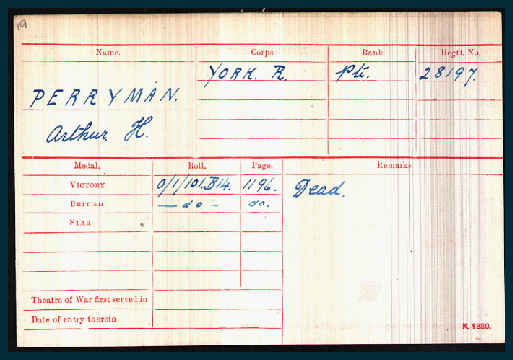Copyright © All rights reserved.



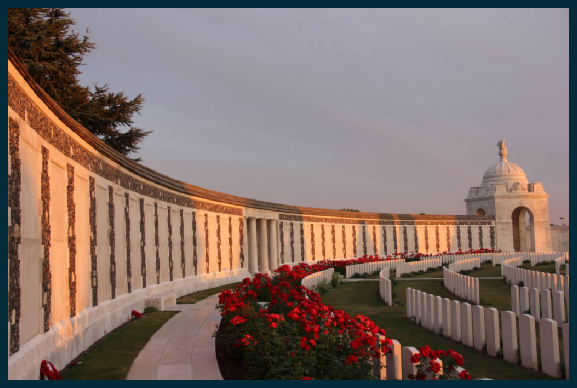
Arthur Hodgson (Hougson) Perryman
During the night of the 23rd-
Somewhere along the line of communication between Belgium and Scarborough the letter informing Margaret Perryman of her husband being reported as ‘missing in action’ had lost, and it was not till mid-
Mrs Perryman heard no further news until almost a year later, when during October 1918 she was informed by the War Office ‘that as no further news regarding your husband has been received, it must therefore be assumed that he had been killed in action on the 20th of September 1917’.
Arthur Hodgson (or Hougson) Perryman was born in Manchester in about 1886. We cannot be certain who his parents were, though he seems to have had a younger brother named Sydney born in Leeds in about 1889. It is possible that Arthur’s baptism is that recorded at Atherton: Arthur Hodgson born in 1885 was baptised on 8 Nov 1885 at Atherton, Lancashire, England. His parents were William and Sarah Hodgson However this is nothing more nor less than a guess!
By 1891, however we reach a degree of certainty – in the 1891 census we definitely meet Arthur:
1891 Census – 40 St Marys Walk, Scarborough, Yorkshire
Edward J Perryman, Head, Married, Male, 45, Ireland, Ship Carpenter,
Elizabeth Perryman, Wife, Married, Female, 46, Scarborough, Yorkshire,
Hannah Perryman, Mother, Widow, Female, 79, Ireland,
Arthur Hodgson, Nurse child, -
Sydney Hodgson, Son, -
Edward was a first generation immigrant from Ireland. Born in Brandon, County Cork he married a local Scarborough girl, Elizabeth Pearson at St Mary’s Parish Church on 9 July 1879. Edward was a former Merchant Seaman, and was now working as a self-
By 1901 they seem to have moved a few houses down the road and Arthur has adopted the surname of Perryman.
1901 Census -
Edward J, Perryman, Head, Married, Male, 49, -
Elizabeth, Perryman, Wife, Married, Female, 47, Scarborough, Yorkshire, England, -
Arthur H, Perryman, Son, Single, Male, 15, Manchester, Lancashire, England, Out Fitters Apprentice,
Hannah, Perryman, Mother, Widow, Female, 91, Ireland, -
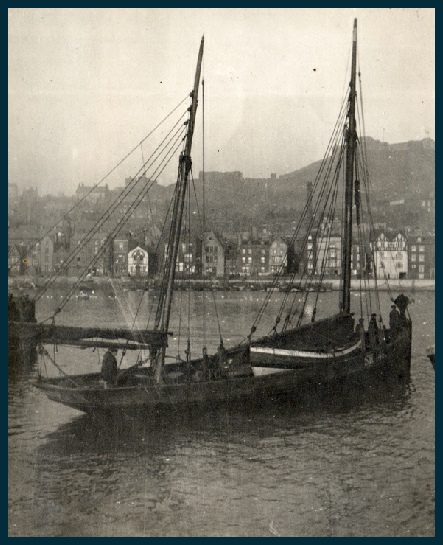
A former pupil of the Central Board School, Arthur was now an apprentice to Mr Francis Fairweather, a tailor, whose premises were located at No.38 St Thomas Street.
Old Mrs Perryman barely survived the census and by 1911 they had moved to Hoxton Road and change was in the air for Arthur, now working as a window cleaner.
1911 Census – 24 Hoxton Road, Scarborough
Edward James Perryman, head, 61, married, m, 1 child of marriage, 1 child living, carpenter (ship’s) , worker, born Castlegozy, Ireland
Elizabeth Perryman, wife, 57, married 32 years, f, born Scarborough, Yorks
Ethel Quin, lodger, 22, single, f, domestic, born Fishburn, Durham
Arthur Hodgson Perryman, son, 24, single, m, window-
In the third quarter of 1901 Arthur married Margaret Blanche Guthrie. Margaret was born in Leith on the outskirts of Edinburgh and it would seem likely that she had originally come south with the fisher women of the Scottish fleet who followed the herring down the coast in the late summer, though at the time of the 1901 census she was working as a sorter and packer in a laundry.
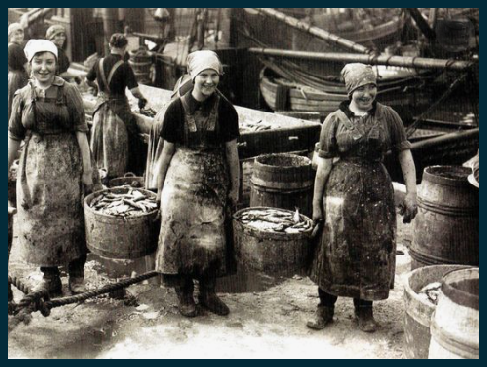
By the following year the young couple had moved to Malton and their only child David Guthrie Perriman was born there in the third quarter of 1912.
When war broke out in 1914 Arthur was living in Saville Street in Malton. He seems to have enlisted in the Territorial 2/5th battalion of the Yorkshire Regiment during September 1915 as a Private (Service Number 28197). The 2/5th Battalion was formed at Scarborough in September 1914 as a home service (“second line”) unit. It moved to Darlington in November 1914 and Benton in April 1915 and later moved to Catterick. On 1 March 1915 it came under the orders of 189th Brigade, 63rd (2nd Northumbrian) Division, which was broken up in July 1916.
In November 1915 Arthur joined the British Red Cross Society as a military volunteer engaged in transporting the wounded with the St John Ambulance Brigade, a role he continued with until April 1917.
From July 1916 all category A1 men, now deemed by the Military Service Act to be available for overseas service, were posted from 2/5 Yorkshires to other battalions overseas. It was probably soon after the end of the Somme Offensive in November 1916 that Arthur was sent to France like many thousands more as a replacement for battle casualties. It was presumably in April 1917 when he ceased acting as a Red Cross volunteer that he joined the 9th [Service] Battalion of the Yorkshire Regiment, which, at the time that Perryman joined the unit, formed a third of 69 Brigade of the veteran 23 Division, a unit which had seen much hard fighting during the Somme Offensive, during which the division had gained no less than six Victoria Crosses. The 9th had been formed at Richmond on 26 September 1914 as part of K3 and in October were attached to 69th Brigade, 23rd Division. They moved to Frensham and in February 1915 went on to Folkestone and Maidstone in Kent before being sent to France where they landed at Boulogne on 26 August.
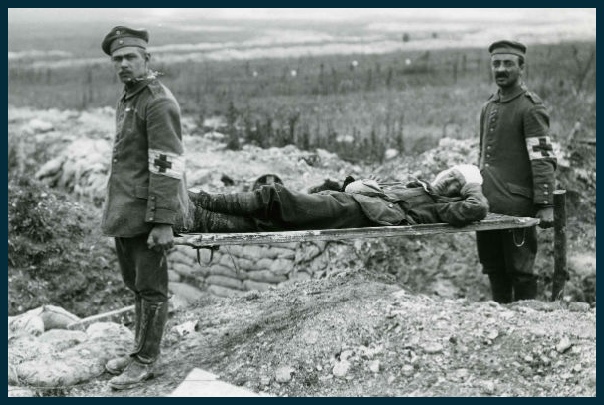
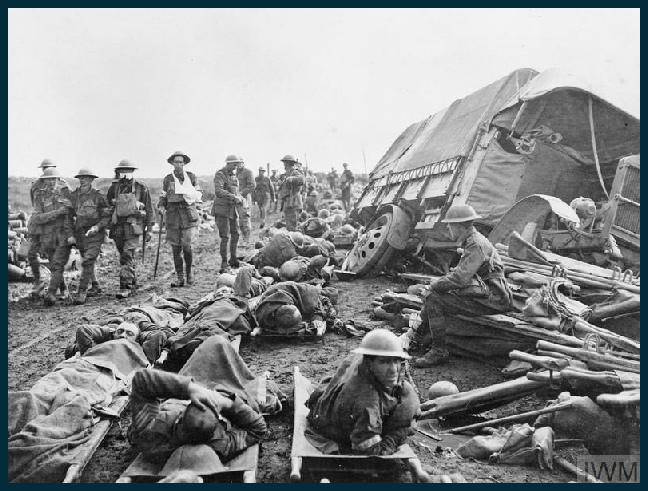
Through April and May the battalion alternated between life in camps, engaged in training and providing working parties and in the frontline trenches in the area near Dickebusch, where the engaged in occasional raids on the enemy and in repelling enemy incursions into their own trenches.
On 7th June they took part in an attack on Battle Wood. They found themselves under very heavy fire while advancing through dense undergrowth and eventually were forced to dig in. Communication seems to have been very poor and they were unable to contact the British artillery when they found themselves on the receiving end of their barrage. That night saw 80 killed or missing and a further 185 wounded.
In July they moved to the Ouderdom area and continued alternating between the front line and the reserve. August was spent almost entirely in training and on 27th August they moved back to the Dickebusch area where reconnoitring took place for a proposed attack on Inverness Wood.
On Friday 21 September 1917 ‘The Scarborough Mercury’ carried headlines declaring ‘The new British offensive’, ‘Great success attended our troops’, ‘Inverness Copse carried by North Country soldiers’
These were accompanied by a communiqué issued by British GHQ the previous evening.
‘Our attack this morning east of Ypres was made on a front of about eight miles between the Ypres-
Great success attended our troops. Positions of considerable military importance have been won and heavy casualties inflicted on the enemy.
The assembling of the regiments detailed for the attack was carried out without incident, although rain fell steadily during the night. Our first objectives were captured at an early hour, including a number of concreted strong points and fortified farms for the possession of which heavy fighting had taken place during the previous attacks.
North Country troops carried Inverness Copse, Australian troops stormed Glencourse Wood and Nonnebushen [Wood]. Scottish and South African brigades took Potsdam, Vampir, and Bolly farms. West Lancashire Territorials carried Iberian farm and the strongpoint known as ‘Gallipoli, our troops then advanced to the assault of their final objectives.
On our right English county troops reached the line of their final objectives after sharp fighting in the woods north of the Ypres-
In the centre North Country and Australian battalions penetrated German positions to a depth of over a mile, and captured the whole of their objectives, including the hamlets of Veldhoek, and the western portion of Polygon Wood.
Further north, Zevenkek was captured, and London and Highland Teritorials carried a second line of farms, including Rose Farm, Quebec Farm, and Wurst Farm, on the line of their final objectives.
During the morning the weather cleared and our aeroplanes were able to take a more active part in the battle, indicating the positions of our troops and reporting hostile concentrations to our artillery.
No accurate of the number of prisoners captured can yet be given, but they are known to exceed 2000. We also captured a few guns’….
Although this had, in essence, been correct, the report does not disclose the fact that they had suffered over twenty one thousand killed and wounded for those few miles of ground.
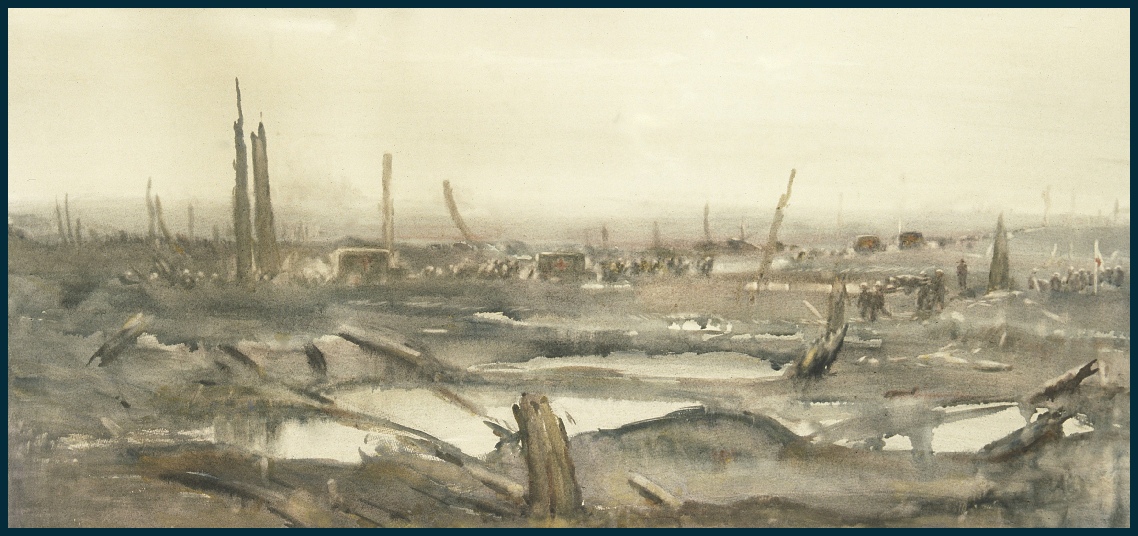
For the Menin Road operations, which began 20 September, 23 Division, attached to the Tenth Corps of Second Army, was given the task of capturing a line of enemy trenches running south from a stream known as the ‘Reutelbeek’ across and below the Menin Road. During the previous night, 65,000 men belonging to the eighteen Brigades of infantry earmarked to take part in the assault had begun to make their way to their appointed assembly positions.
At midnight it began to rain and the men’s approach march became increasingly difficult as the ground was churned up by the thousands of marching feet. Perryman’s battalion had begun to make their way towards their start line at 1pm on that night when…”H.Q. moved up to Clapham Junction under the Menin Road, and ‘A’ and ‘B’ Companies moved up to the vicinity of Stirling Castle and Sanctuary Wood. At 9-
By 5.29am that morning, the men, despite a generous tot of pre battle rum, were shivering in the dark wet sixty seconds leading up to Zero Hour. Overhead the British preliminary bombardment rose to its insane crescendo as the last of over 1.6 million shells fired during the preliminary bombardment blasted into the enemy’s positions. One minute later ‘A’ and ‘D’ Companies of the 9th Yorkshires left their assembly positions to advance towards ‘Inverness Copse’, closely followed by the battalion’s ‘B’ and ‘C’ Companies…’The morning was dark and there was a considerable mist, and this combined with the dense clouds of smoke caused by our artillery barrage, rendered the question of keeping direction extremely difficult. But in spite of this, and in spite of the fact that the ground over which they were advancing was pitted with shell holes and strewn with broken tree trunks and barbed wire, very little loss of direction occurred until the battalion had advanced about one hundred and fifty to two hundred yards into Inverness Copse. Here according to arrangement a halt was called for about three quarters of an hour, the troops taking advantage of shell holes and natural cover. Even at this early stage of the action isolated instances occurred of fighting, individual Germans who had not been mopped up bombing our men from the rear, where the enemy also fired a green S.O.S. Very Light’
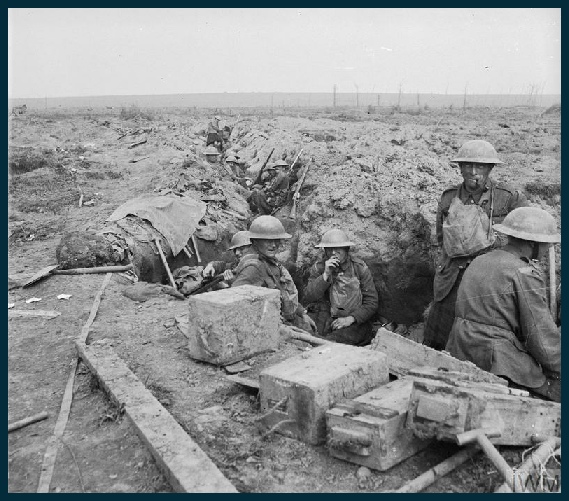
During this pause the troops reorganised, the direction of attack being checked by the Battalion’s officers using their compasses, while the men, reportedly ‘in the best of spirits’, and in spite of heavy machine gun and rifle fire, sat calmly in shell holes smoking German cigars whilst waiting for the order to resume their advance.
‘At Zero Hour plus 80 minutes the companies commenced to move forward, and it was while advancing from this position to the Red Line that some of the heaviest fighting occurred; for numerous small parties of Germans had remained in the wood in dug outs and shell holes, and many of these put up a strong resistance, attacking our men with bombs and causing many casualties by machine gun and rifle fire. All these parties were, however, successfully mopped up, at least sixty Germans being killed in the copse. By this time the battalion had suffered considerably from Germans in the wood, form machine gun fire from a strong point beyond, and from a hostile artillery barrage; and before reaching the Red Line eight of the sixteen Company officers had been hit, including two of the Company Commanders. All the same the men formed up well under the barrage ready to go forward at Zero plus 88 minutes according to programme’
Although the 9th Yorkshires had been sorely decimated in Inverness Copse, the attack continued and by the time that the survivors reached the Menin Road, and their objective, a number of dugouts and concrete gun emplacements, where they had come under intense machine gun fire. Despite the intense fire the Yorkshiremen moved on and became involved in ferocious hand-
Throughout the remainder of the day the surviving members of the battalion consolidated their newly gained positions.

Considering the devastation caused by the Third Battle of Ypres, it is little wonder that, despite numerous searches of the battlefield no identifiable remains of Arthur Perryman, nor almost thirty five thousand other missing officers and men were found. Perryman and the thirty five thousand servicemen with ‘no known grave’ were eventually commemorated on the Tyne Cot Memorial. Arthur’s name is amongst those listed on the panels dedicated to the missing of the Yorkshire Regiment [52-
In Scarborough, apart from the town’s War Memorial Arthur’s name is commemorated amongst the names of one hundred and fifty six former parishioners of St Mary’s who are featured on the Church ‘Roll of Honour’, which is located on the north interior wall. It can also be found on a grave marker in the town’s Manor Road Cemetery [Section R, Row 4, Grave 17], which also includes the name of his Irish-
Arthur Perryman’s name is also included on the memorials at St Michael’s Church, Malton, Saville Street Methodist Church,the Malton Town War Memorial and the St. John's Ambulance Brigade Northern District War Memorial, currently located in the Trimdon Station Community Centre.

In the second quarter of 1922 Margaret remarried in Scarborough, marrying Arthur Gray and their daughter Nora Hollis Gray was born there on 15 Feb 1923. By 1939 they were living in Middlesborough.
Arthur’s son David moved to Barnsley where he married Freda Horsfield in 1939. Soon after they also moved to Middlesborough living at 111 Mandale Road. David was working as a Chartered Secretary & Director in the transport industry. He died in 1999 in Eastbourne .
